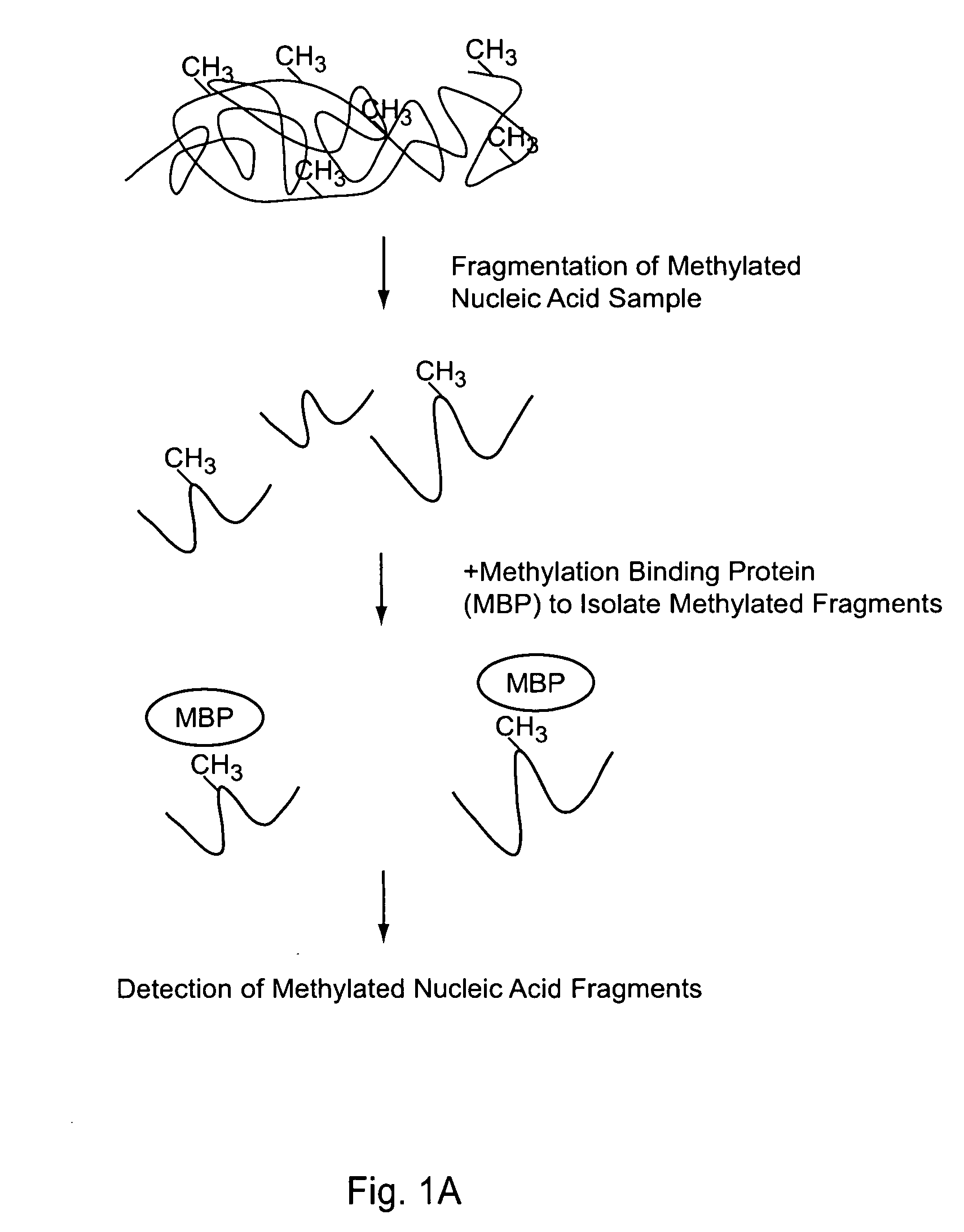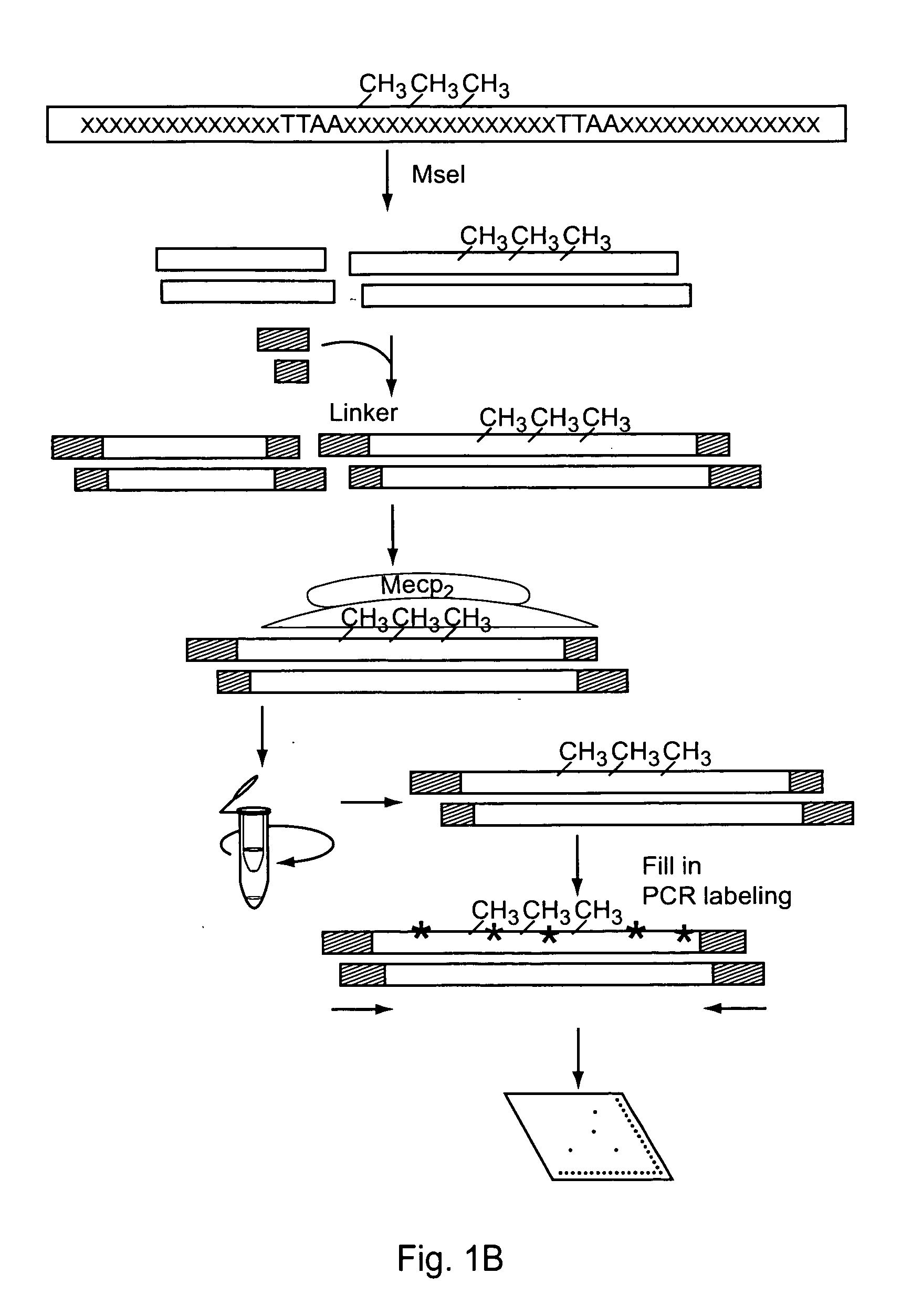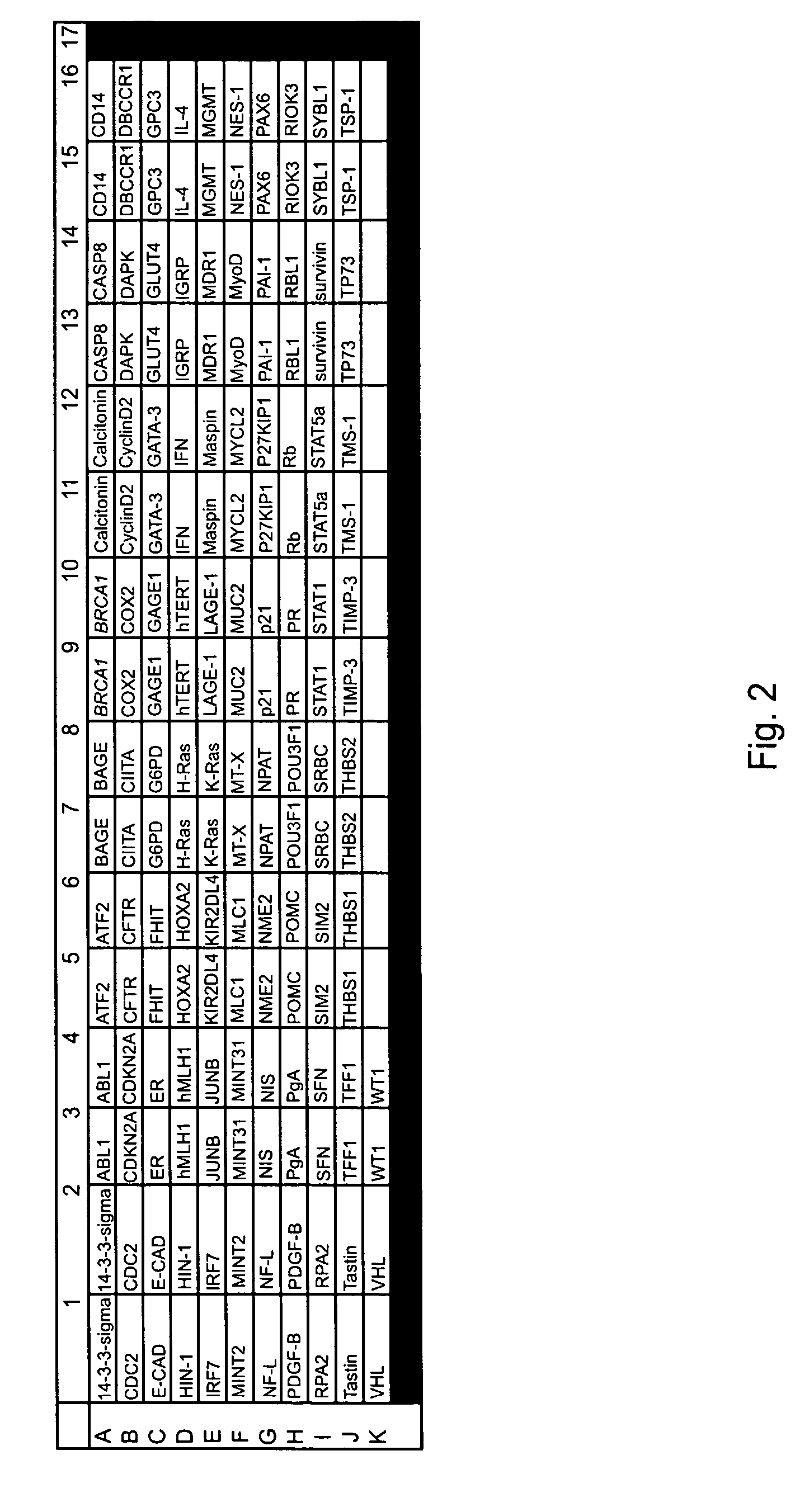High throughput profiling of methylation status of promoter regions of genes
a gene promoter and high throughput technology, applied in the field of detection of the methylation status of nucleic acids, can solve the problems of decreased gene expression, tumor growth and development, and genome instability, and achieve the effects of inhibiting the hypermethylation of dna, increasing and decreasing the levels of methylated nucleic acid
- Summary
- Abstract
- Description
- Claims
- Application Information
AI Technical Summary
Benefits of technology
Problems solved by technology
Method used
Image
Examples
example 1
Array Analysis of Promoter Methylation
[0202] In this example, an embodiment of the methodology provided in the present invention was used for the high throughput analysis of promoter methylation, which simultaneously profiles the methylation status of 82 different promoter regions, from one sample.
[0203] As illustrated in FIG. 1 Panel B, this embodiment includes 3 steps:
(1) Genomic DNA is digested with a restriction enzyme to isolate DNA with CpG islands. The digests are purified and adapted with linkers.
(2) The adapted DNA is incubated with the methylation binding protein (MBP), which forms a protein / DNA complex. These complexes are separated and methylated DNA is isolated.
(3) The methylated DNA is labeled with biotin-dCTP via PCR and these probes are hybridized to the methylation array.
The details of the above procedure are described below.
I. Fragmentation of Genomic DNA
[0204] We digested 2 μg of genomic DNA from cell samples such as Hs 578Bst, Hs 578T and MCF7 cells ...
example 2
BDNA Analysis of Promoter Methylation
[0230] The following sets forth a series of experiments that demonstrate isolation and detection of methylated nucleic acids, using a nitrocellulose filter-based 96 well plate separation method to isolate methylated DNA-MBP complexes and a bDNA assay to detect the DNA from the isolated complexes. Use of the multiwell filter separation plate facilitates high throughput analysis of multiple samples, since large numbers of samples (e.g., up to 96, on a 96 well plate) can be processed simultaneously to separate methylated nucleic acid from unmethylated nucleic acid. Use of the bDNA detection technique shortens the procedure as compared to array detection, since the bDNA assay does not include linker ligation, PCR biotin labeling, or array hybridization steps. The procedure is schematically illustrated in FIG. 4.
[0231] Methylated DNA Preparation
[0232] 1.5 μg genomic DNA prepared from MCF7, T47D, and 1806 breast cancer cell lines (American Type Cult...
PUM
| Property | Measurement | Unit |
|---|---|---|
| Molar density | aaaaa | aaaaa |
| Molar density | aaaaa | aaaaa |
| Fraction | aaaaa | aaaaa |
Abstract
Description
Claims
Application Information
 Login to View More
Login to View More - R&D
- Intellectual Property
- Life Sciences
- Materials
- Tech Scout
- Unparalleled Data Quality
- Higher Quality Content
- 60% Fewer Hallucinations
Browse by: Latest US Patents, China's latest patents, Technical Efficacy Thesaurus, Application Domain, Technology Topic, Popular Technical Reports.
© 2025 PatSnap. All rights reserved.Legal|Privacy policy|Modern Slavery Act Transparency Statement|Sitemap|About US| Contact US: help@patsnap.com



